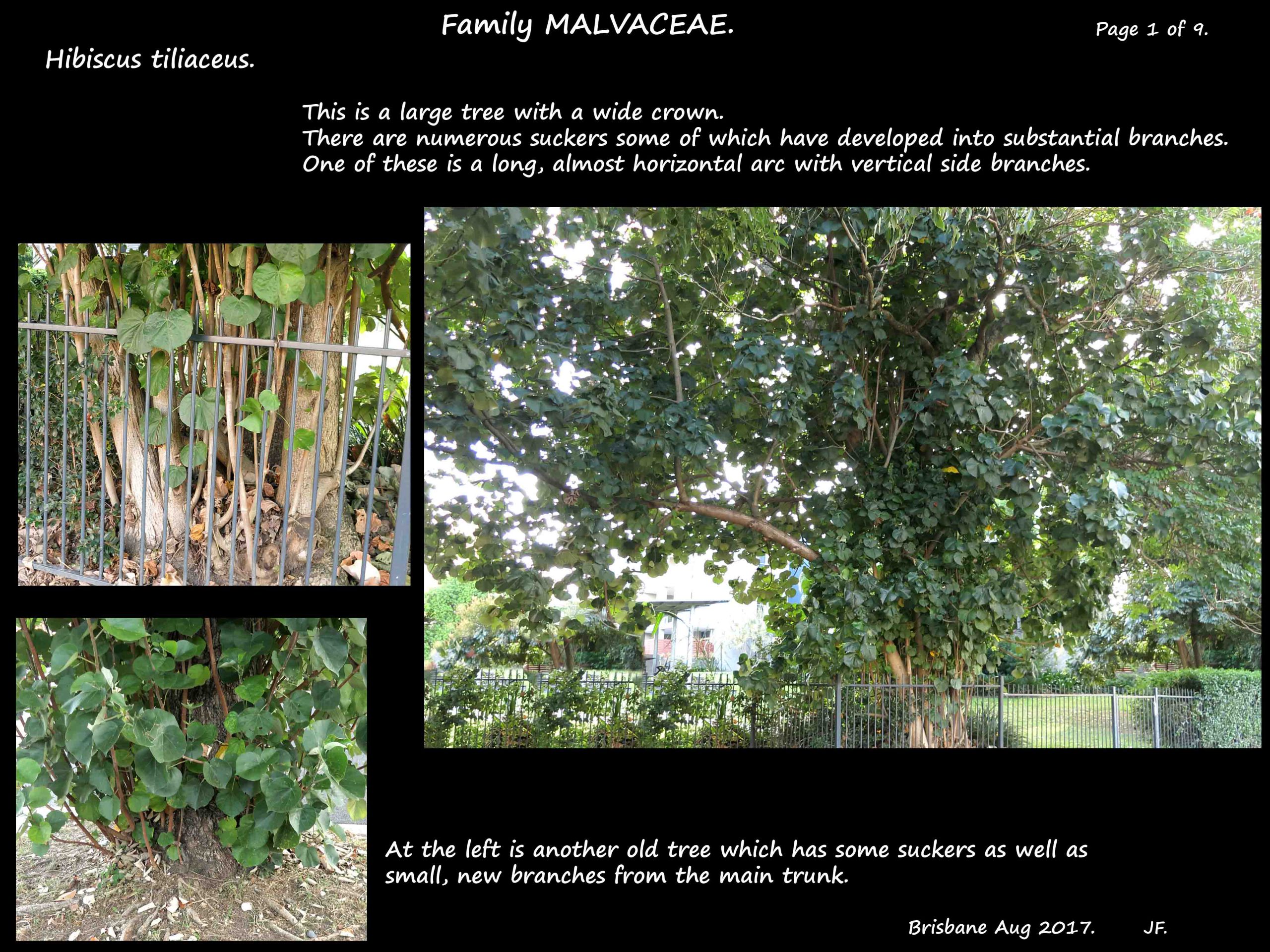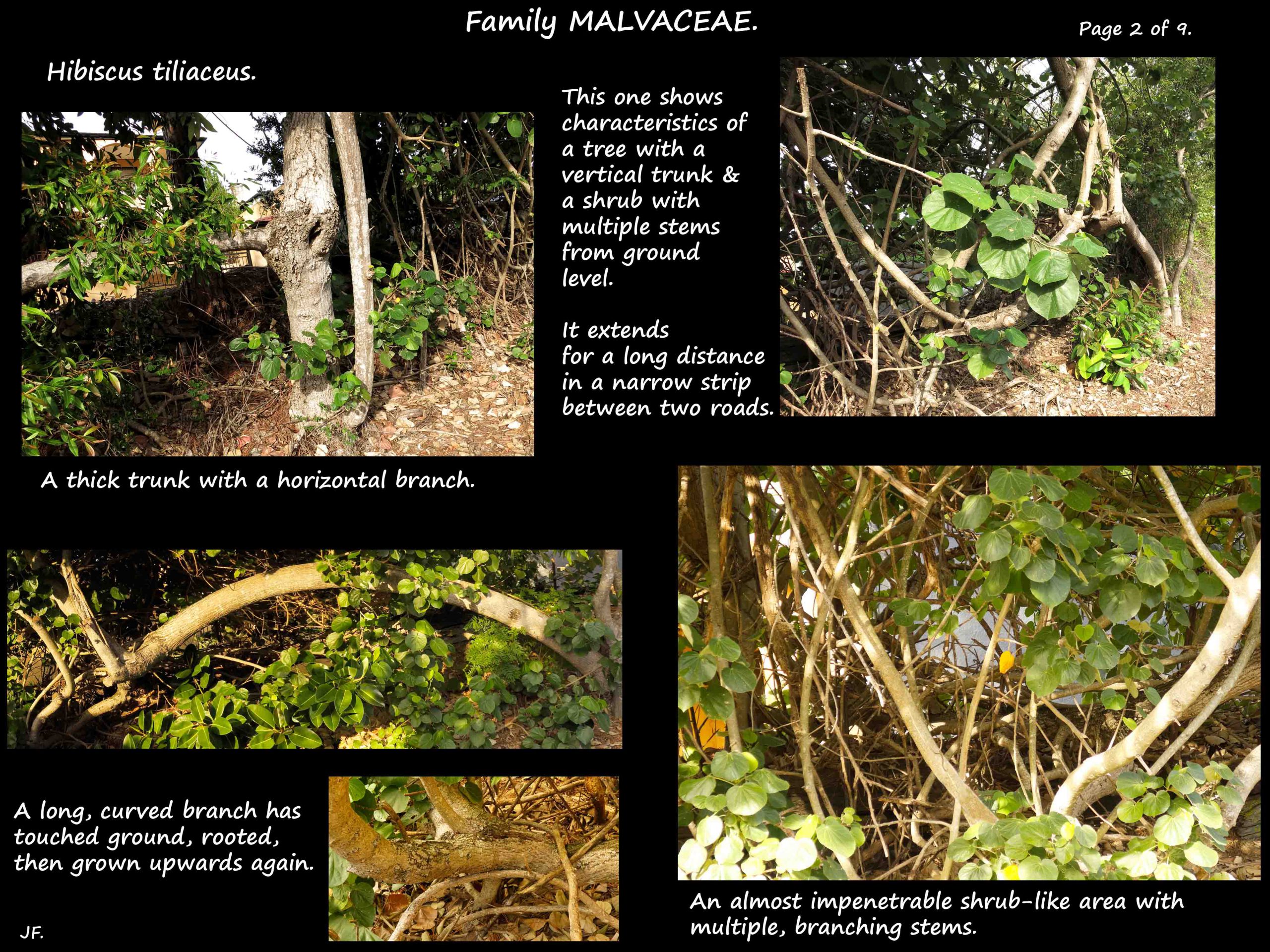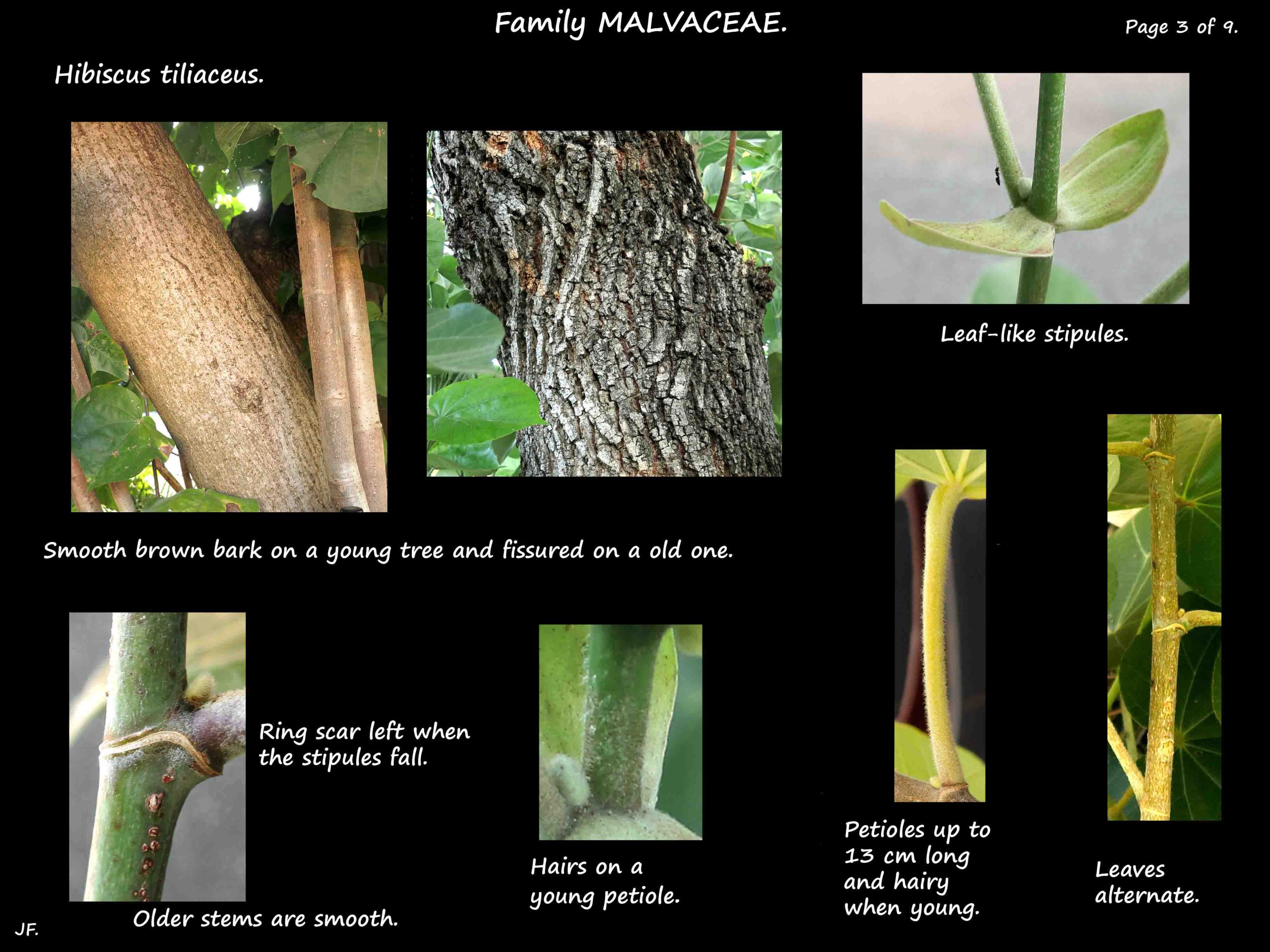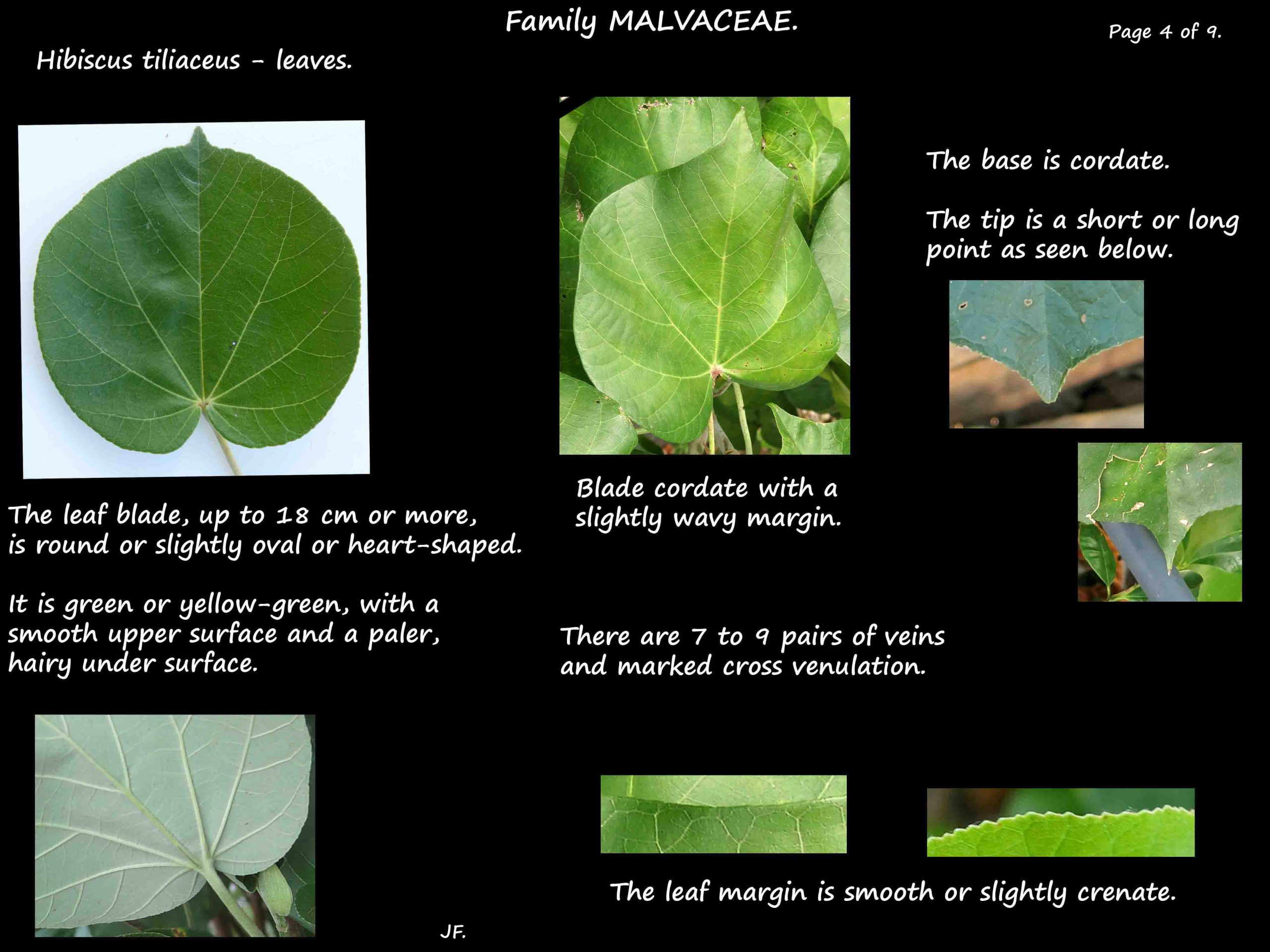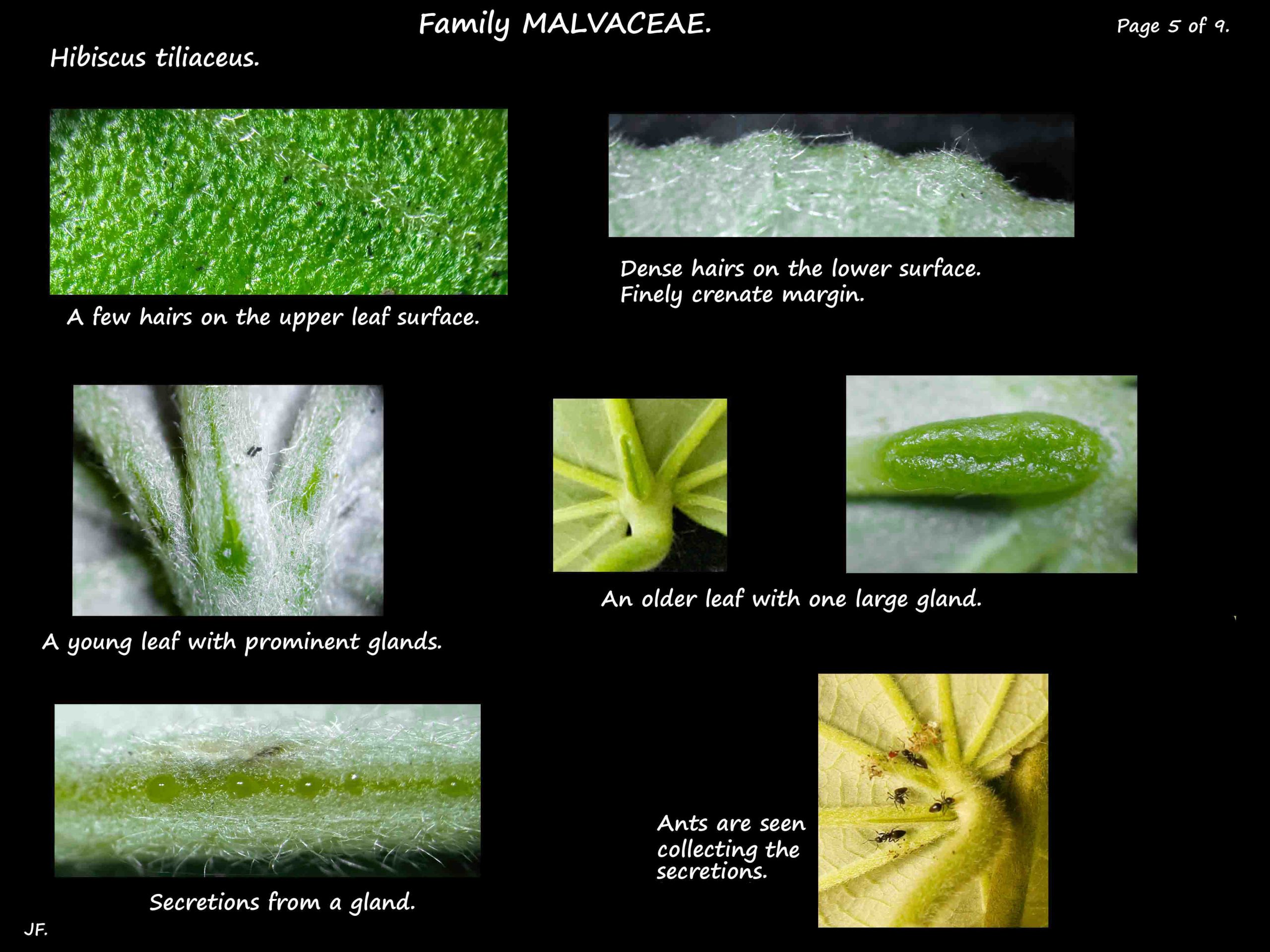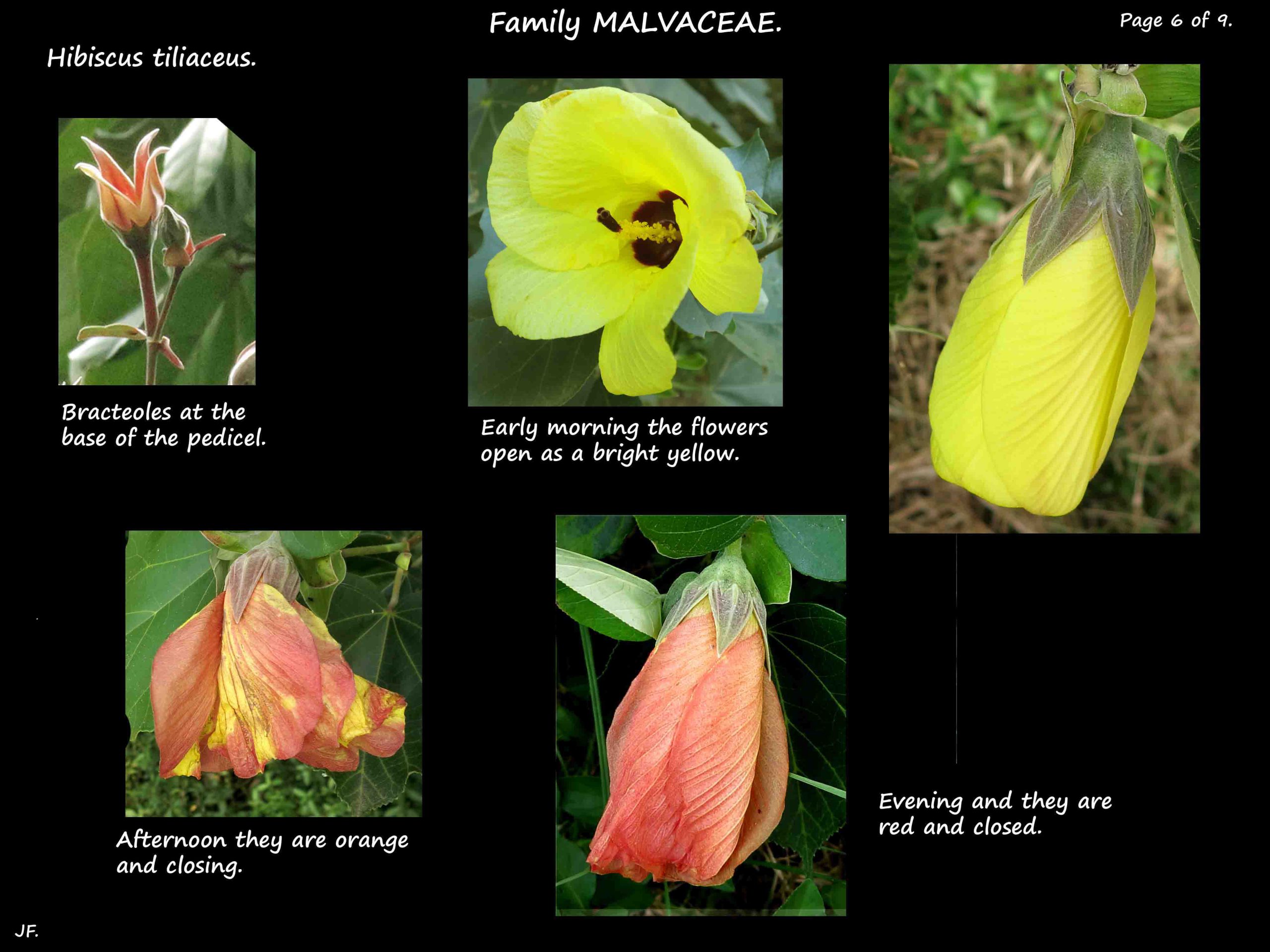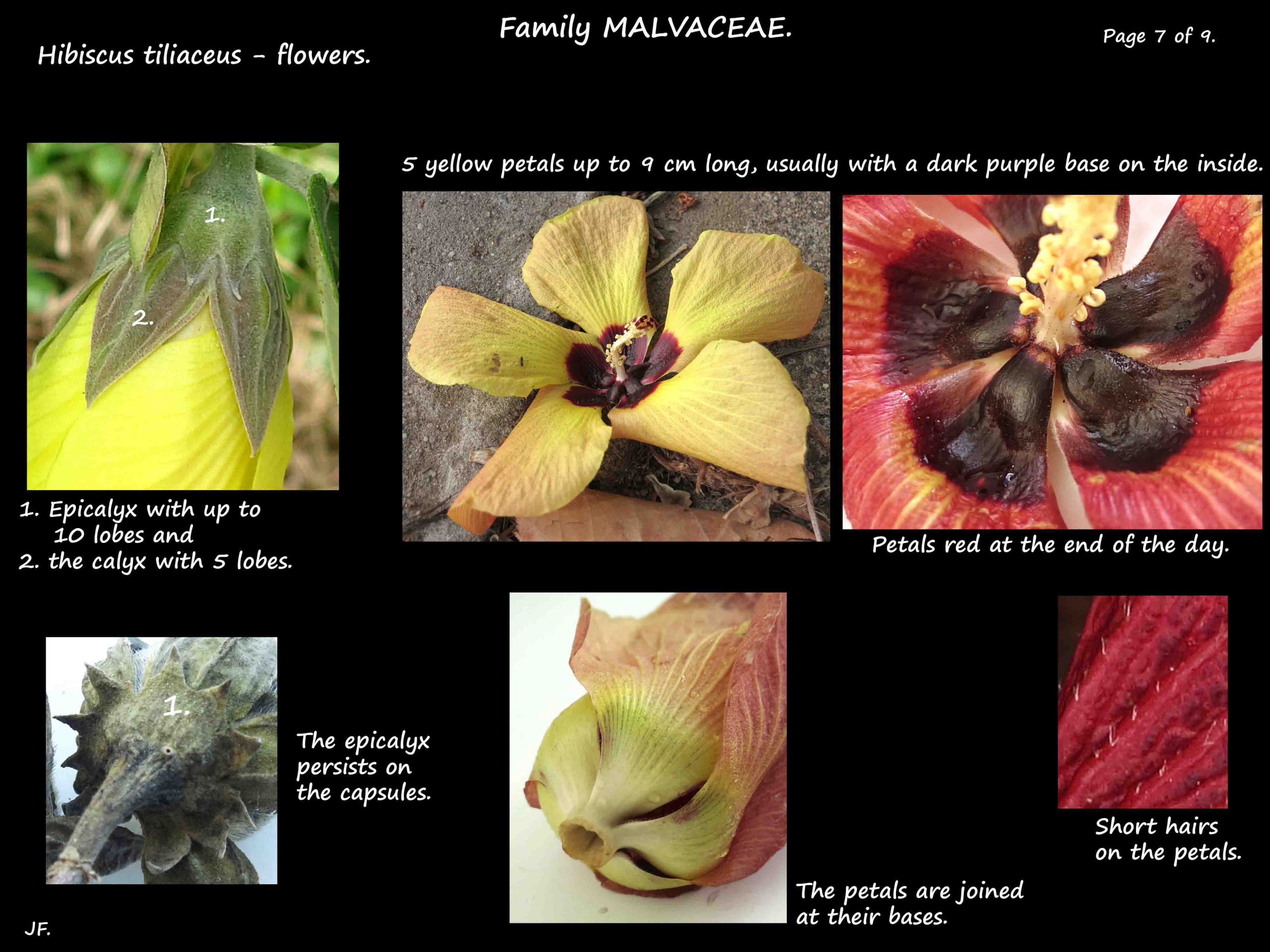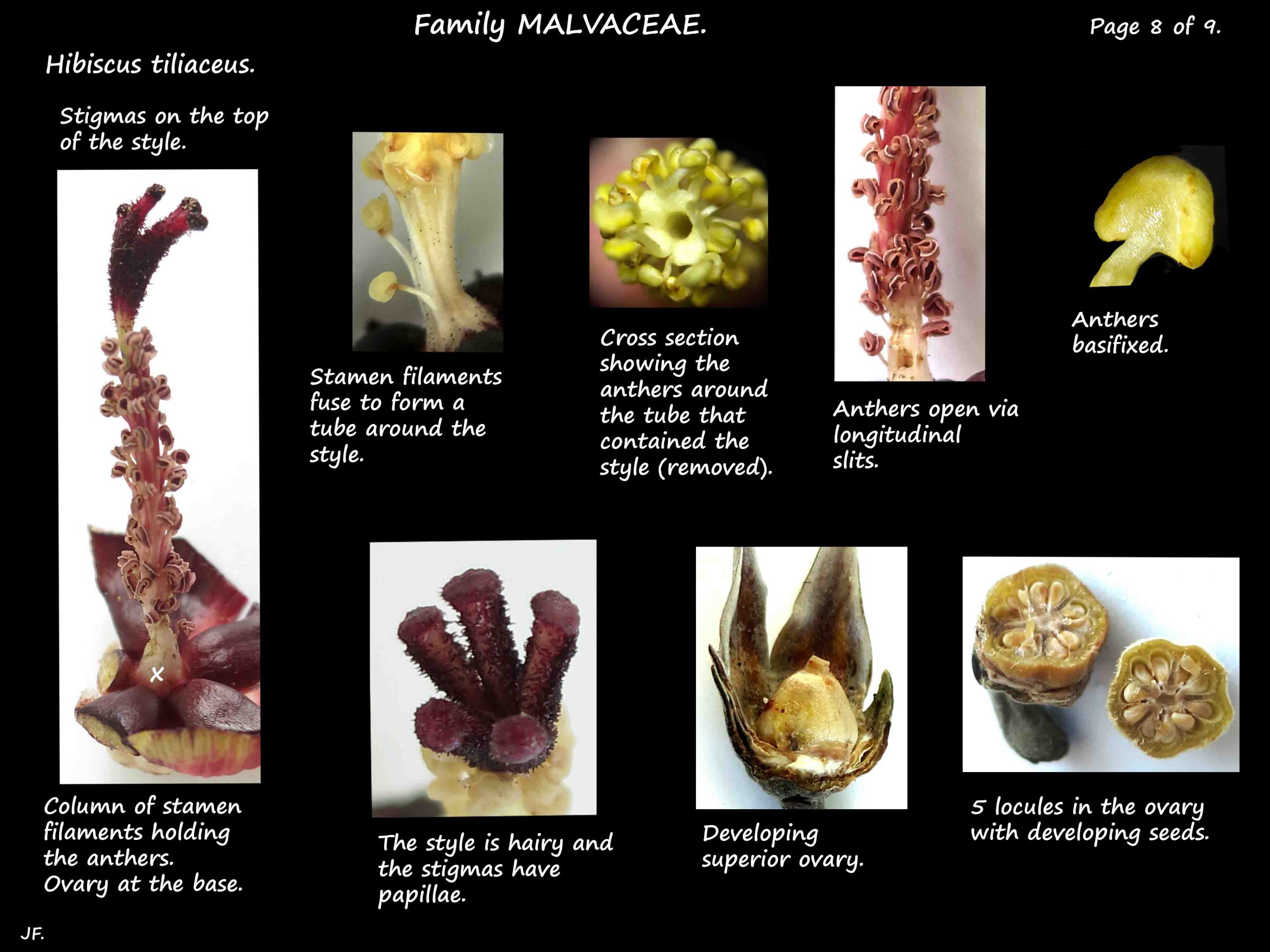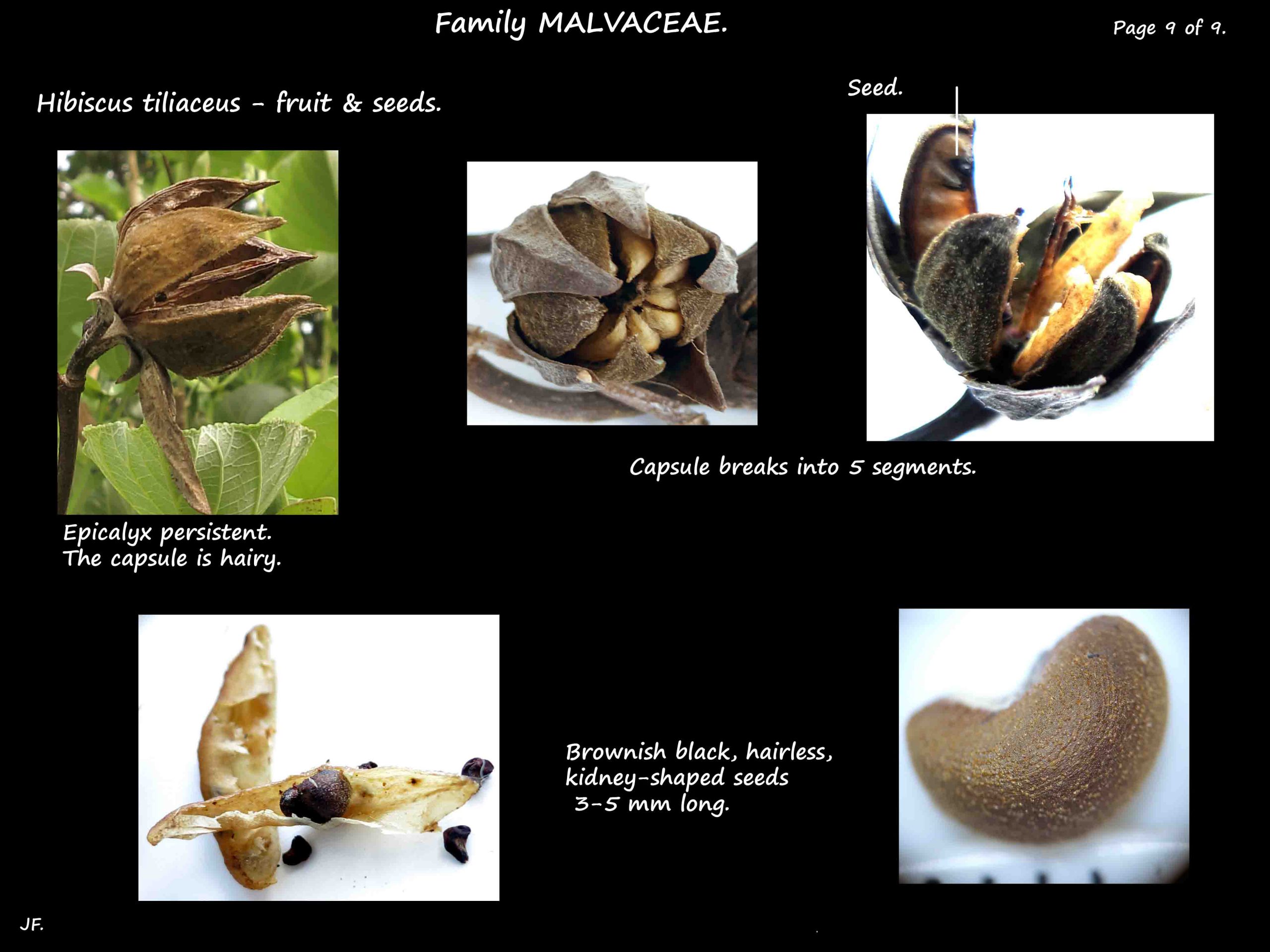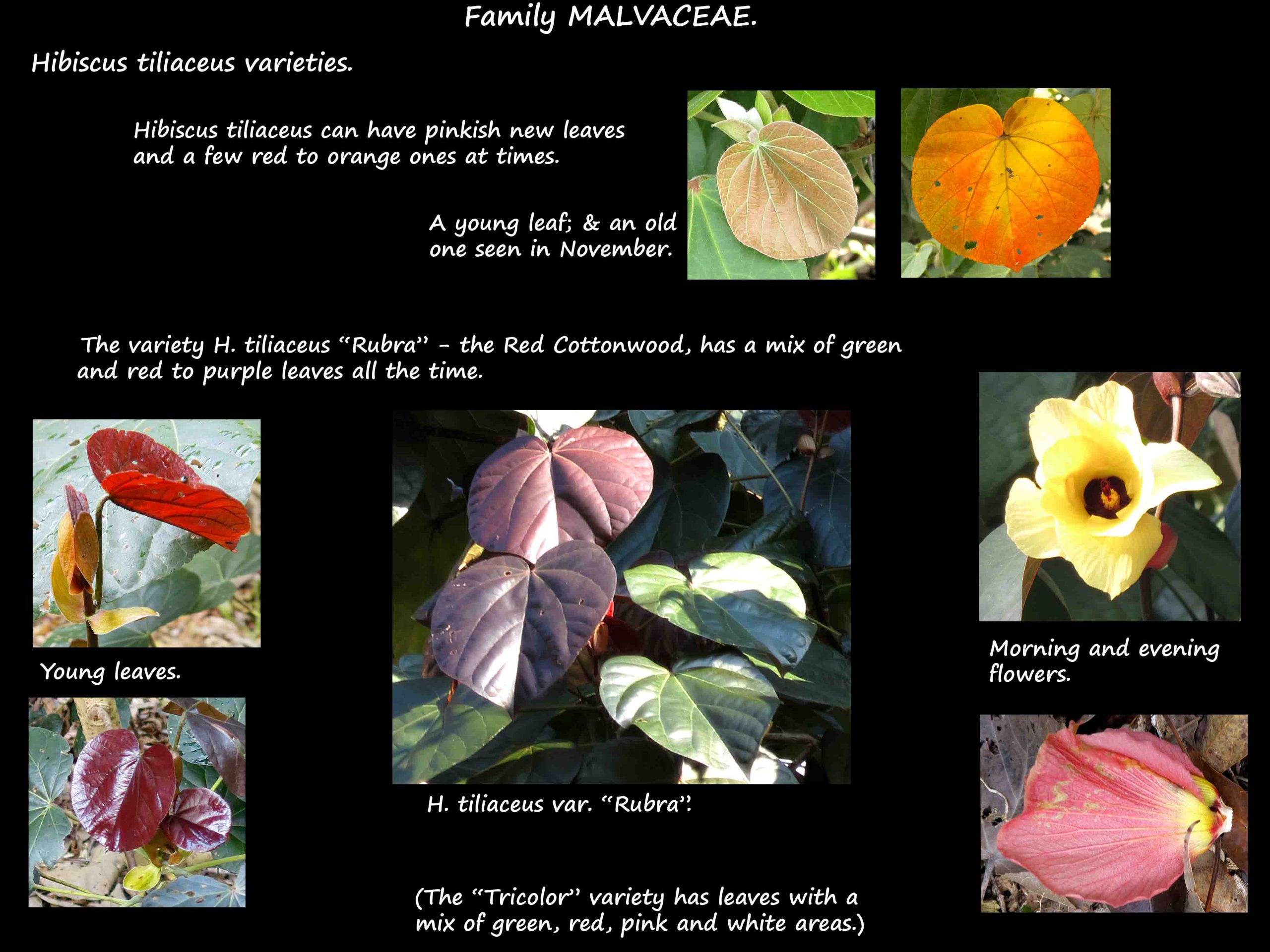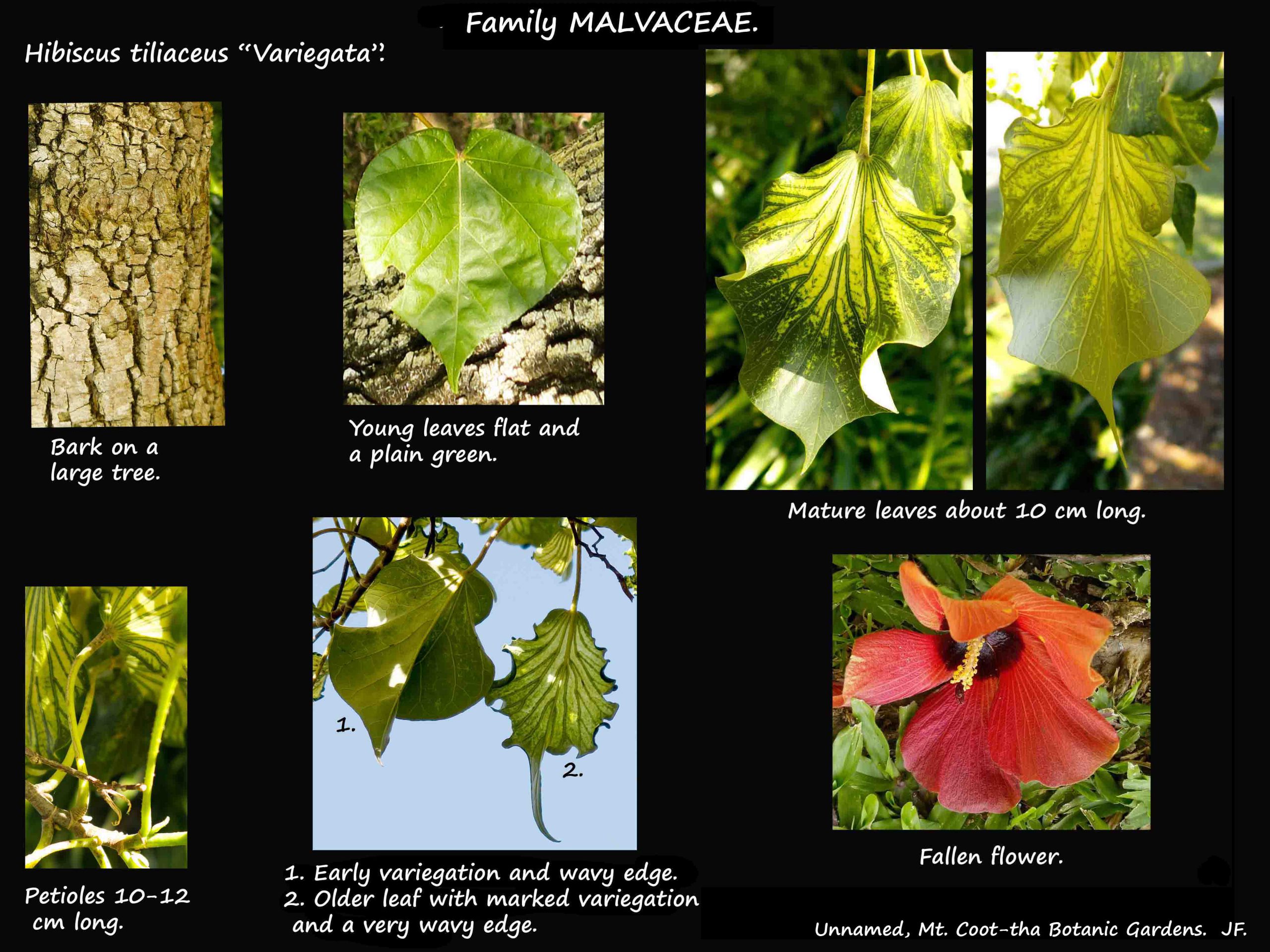Hibiscus tiliaceus – Cottonwood.
Family Malvaceae.
Known as ‘Cottonwood’ or native hibiscus.
It has been suggested that it, and 21 other Hibiscus species, be moved to a new genus
named Talipariti and it may become known as Talipariti tiliaceus.
It can grow as a tree or a shrub.
As a tree it can be 10 m high and wide.
As a shrub it has a dense mass of prostrate branches and can cover a large area.
The bark is a smooth brown or grey but rough in older trees.
Young branches, petioles and the undersides of leaves plus the calyx and capsules
have a dense covering of short hairs.
Leaves are alternately arranged and there are a pair of leaf-like stipules at the base
of the petiole which leave a ring scar.
Petioles can be up to 8 cm long and the widely ovate or heart-shaped leaves up to 18 cm.
The upper leaf surface is a deep or yellow-green but the dense hairs on the underside make it pale.
(Some have variegated, red or purplish leaves).
The margins may be finely toothed and the tip has a long or short point.
There are 3 elongated glands on the lower surface near the bases of the main veins.
Inflorescences of 1 to a few flowers are often terminal but can be axillary.
The hairy pedicels have a pair of bracteoles at the base.
Flowers, which can be up to 15 cm wide, only last 1 day.
They have a very hairy epicalyx of up to 10 partly joined lobes with pointed tips.
The hairy calyx has 5 narrow lobes with pointed tips.
Flowers open as yellow but change to orange then red during the day.
The 5 petals usually have a deep reddish-purple spot at their joined bases.
There are short hairs on the outer surface.
The joined stamen filaments form a tube about 3 cm long with the anthers on the sides.
Each of the 5 carpels has a long thin hairy style visible at the top of the stamen column
and topped with a wide stigma.
The fruit is a hairy, 2 – 3 cm round to oval capsule that splits into 5 parts.
Each chamber has 3 dark seeds.
J.F.
